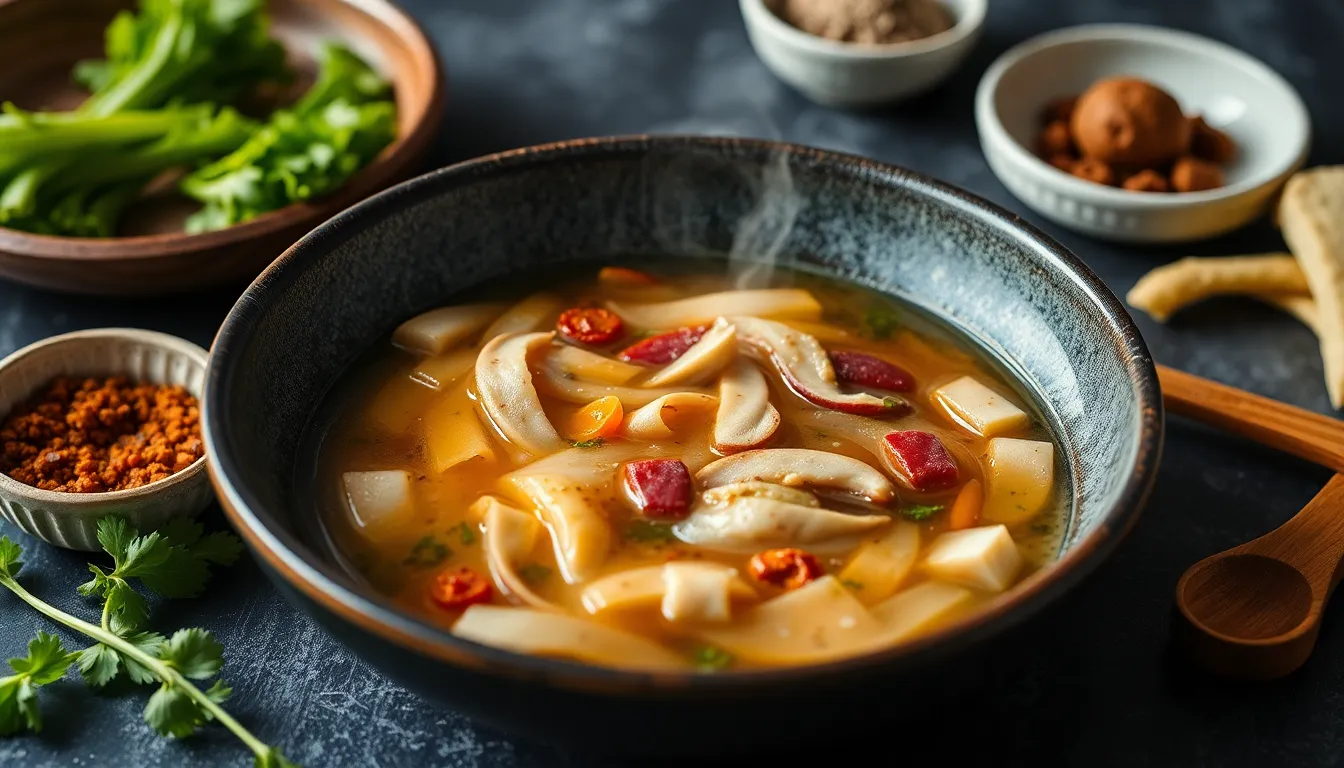How to Pickle Lemons: A Tangy Twist for Your Dishes
Pickling has surged in popularity over the years as home cooks and chefs alike seek ways to enhance their dishes with bold flavors and preserve seasonal ingredients. Among the many pickled delights, pickled lemons stand out for their unique tang and versatility. They can elevate a wide array of culinary creations, making them a fantastic addition to any kitchen.
In this article, we will explore the process of pickling lemons—from the benefits of including them in your diet to a step-by-step guide on how to create your own batch at home. You’ll be inspired to experiment with this delightful ingredient and discover its numerous culinary uses!
Section 1: The Benefits of Pickling Lemons
Nutritional Advantages
- Rich in Vitamin C and Antioxidants: Lemons are a potent source of vitamin C, an essential nutrient that supports the immune system and skin health. Pickling does not significantly diminish their vitamin content.
- Possible Health Benefits: The antioxidants in lemons may help boost immunity and improve digestion, offering added health benefits beyond taste.
Culinary Versatility
- Enhancing Flavors: Pickled lemons add a unique tangy flavor that can brighten up a variety of dishes, from salads to roasted meats.
- Pairing: They work beautifully in Mediterranean and Middle Eastern cuisines, but their versatility allows them to complement nearly any dish, including grains and vegetables.
Long Shelf Life and Preservation
Pickling lemons not only provides flavorful zest but also extends their shelf life, allowing you to enjoy the citrusy goodness year-round.
Section 2: Ingredients Needed for Pickling Lemons
List of Essential Ingredients
- Fresh lemons
- Salt
- Sugar (optional)
- Spices (e.g., garlic, bay leaves, coriander seeds)
- Water
Ingredients Table
| Ingredient | Measurement |
|---|---|
| Fresh Lemons | 5-6 (depending on size) |
| Salt | 1/4 cup |
| Sugar (optional) | 2 tablespoons |
| Garlic | 2 cloves (sliced) |
| Bay Leaves | 2-3 leaves |
| Coriander Seeds | 1 teaspoon |
| Water | 2 cups |
Section 3: Step-by-Step Guide to Pickling Lemons
Step 1: Prepare the Lemons
Begin by selecting fresh, ripe lemons that are firm to the touch. Wash them thoroughly under cold water to remove any dirt or wax. Cut off the ends of each lemon, and then slice them into quarters without cutting all the way through, so they can open like a flower.
Step 2: Create the Pickling Brine
In a saucepan, combine the salt, sugar (if using), and water. Bring the mixture to a boil, stirring until the salt and sugar dissolve completely. Once dissolved, remove from heat and let it cool slightly. Add your preferred spices, such as sliced garlic, bay leaves, and coriander seeds, to enhance the flavor.
Step 3: Packing the Lemons
In a clean glass jar, place the prepared lemons. Press them down firmly to release their juices and create space for the brine. Once packed, pour the cooled pickling brine over the lemons, ensuring they are completely submerged.
Step 4: Sealing and Storing
Seal the jar tightly with a lid. If using a non-airtight container, cover the surface with a layer of olive oil after sealing to prevent oxidation. For short-term storage, place the jar in the refrigerator; for longer preservation, you can store it in a cool, dark pantry.
Section 4: Fermentation Time
Let the lemons pickle for at least one week to develop flavor. For a deeper taste, consider fermenting them for up to a month. Be sure to taste them periodically until you achieve your desired flavor profile. The longer they sit, the more intense and tangy they will become!
Section 5: Culinary Uses for Pickled Lemons
Pickled lemons are an exciting ingredient that can be incorporated into a multitude of dishes. Here are some ideas:
- Salad Dressings: Chop pickled lemons finely and add them to your favorite vinaigrette for a zesty kick.
- Marinades for Meats: Use pickled lemon juice in marinades to tenderize and flavor meats, particularly chicken and fish.
- Garnish for Drinks: Slice pickled lemons thinly to garnish cocktails like gin and tonics or lemonades.
Additionally, you can pair pickled lemons with various cuisines:
- Mediterranean: Use in salads, pasta dishes, or as a topping for grilled vegetables.
- Middle Eastern: Incorporate into tagines, couscous, or as a side to rice dishes.
Section 6: Storage and Shelf Life
Pickled lemons can be stored in the refrigerator for up to six months. Keep an eye out for signs of spoilage, such as off smells or visible mold. To extend their shelf life, ensure they remain fully submerged in their brine and are stored in a clean, airtight container.
Conclusion
Pickled lemons offer a unique flavor and a myriad of health benefits, making them a fantastic addition to your culinary repertoire. Whether you’re looking to enhance your dishes or preserve fresh lemons, pickling is an easy and rewarding process. Don’t hesitate to experiment with your pickling techniques and share your experiences and favorite recipes in the comments below!
Additional Resources
For more inspiration, check out our related recipes, including:




